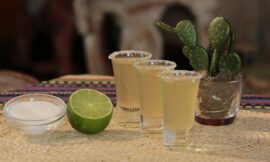How to Read an Italian Wine Label
The world of Italian wine is vast and complicated, and it may be scary to dive in and try with various wines, especially when the label markings seem to be in a different language (as they often are), and when the label markings appear to be in a different language.
Why risk your money on a bottle with a weird name that was produced in some unpronounceable area of Italy when you can spend the same amount of money on a dependable Sonoma Chardonnay or Napa Merlot? The solution is straightforward:
Experimenting with various wines allows you to establish a bigger foundation of knowledge from which you may draw each time you open a bottle of wine. In addition to this, and maybe even more essential, is the fact that these wines are often tasty.
Furthermore, the time you spend experimenting might be considered a virtual journey across the world.
The culture, winemaking practices, and geography of the countries where your wine is sourced can all be learned by simply reading the label — and without the jet lag, souvenir clutter, and fluctuating exchange rates that come with multiple trips abroad (not that there’s anything wrong with doing so, by the way).
Decoding an Italian wine label isn’t particularly difficult once you’ve educated yourself on the Italian wine classification system, gained a thorough understanding of the main grape varietals, become acquainted with which grapes grow in which regions, and become familiar with specific producers, vintages, and labels. Whew.
Okay, so it’s possible that it won’t be completed in a single day. The calle of Venice, on the other hand, isn’t nearly as tough to navigate.
Consider the following scenario: Each component of an Italian wine label contains hints that, when combined, provide more information about the bottle than the more straightforward labels we’re used to seeing on wines made in the United States of America.
What You Should Know
The sheer amount of information supplied on an Italian wine label bottle — in a foreign language, no less — may be intimidating when trying to decipher it. Here are six essential signs to look for on an Italian wine label that can assist you in selecting the bottle you wish to purchase:
- 1) The wine’s name seems to be clear, doesn’t it? However, the placement of the “name” on the label might change, and occasionally the “name” is also the name of the estate or vineyard, which can be confusing.
- 2) Wine appellation, region, and/or grape varietal: Once again, these terms will not always be defined explicitly in the text. To fit the pieces of the jigsaw together, you’ll need to draw on your knowledge of Italian geography and grape varietals, among other things.
- 3) Producer: This is a frightening, unpronounceable phrase or set of words that is often used.
- At order to be legal, the classification of the wine (DOC, DOCG, IGT, Vino da tavola) must be shown, unless you’re sipping wine in a tiny winery in the hills of Italy (which is excellent) or drinking a bottle your cousin “cultivated” from a DIY kit (which is terrible) (likely bad).
- 5) Additional classification terms: Language used to denote extra aging or manufacturing subtleties includes terms like as Classico, Superiore, and Riserva .
- 6) Vintage refers to the year in which the wine was made. Finally, something straightforward.
Terminology that isn’t already in use
You’ll also come across the following simple Italian terms that describe the contents of the bottle, albeit they’re less common:
Bianco means white in Italian.
Rosso is a color that means “red.”
Dolce: a delectable treat
Secco is a dry word.
Spumante is a sparkling wine.
On top of that, certain Italian wines will feature even more information about the vineyard and area from which they were sourced — and we’re not talking about the ridiculously flowery language occasionally used to describe the winery’s rolling hills and gorgeous panoramas, which we’re not talking about.
Here’s a list of terminology you could come across, some of which are more prevalent than others, as well as their definitions:
The term “Azienda Agricola” refers to a farm that produces its own grapes and may also cultivate a variety of other fruits and vegetables.
A fattoria is a medium- to large-scale wine-growing operation.
In Italian, a podere/poderi is a small wine farm or property, which is often part of a larger fattoria.
Tenuta is a huge estate in Tuscany.
It is usually an excellent indicator to find a single vineyard with a specific name (this is especially true in Italy).
Let’s get started with the decoding: Take a Look at These Sample Wine Labels
Consider the following eight Italian wine labels, which are roughly categorized from facile (easy) to difficile (difficult), in order to show how our gained knowledge plays out in the field of wine.





